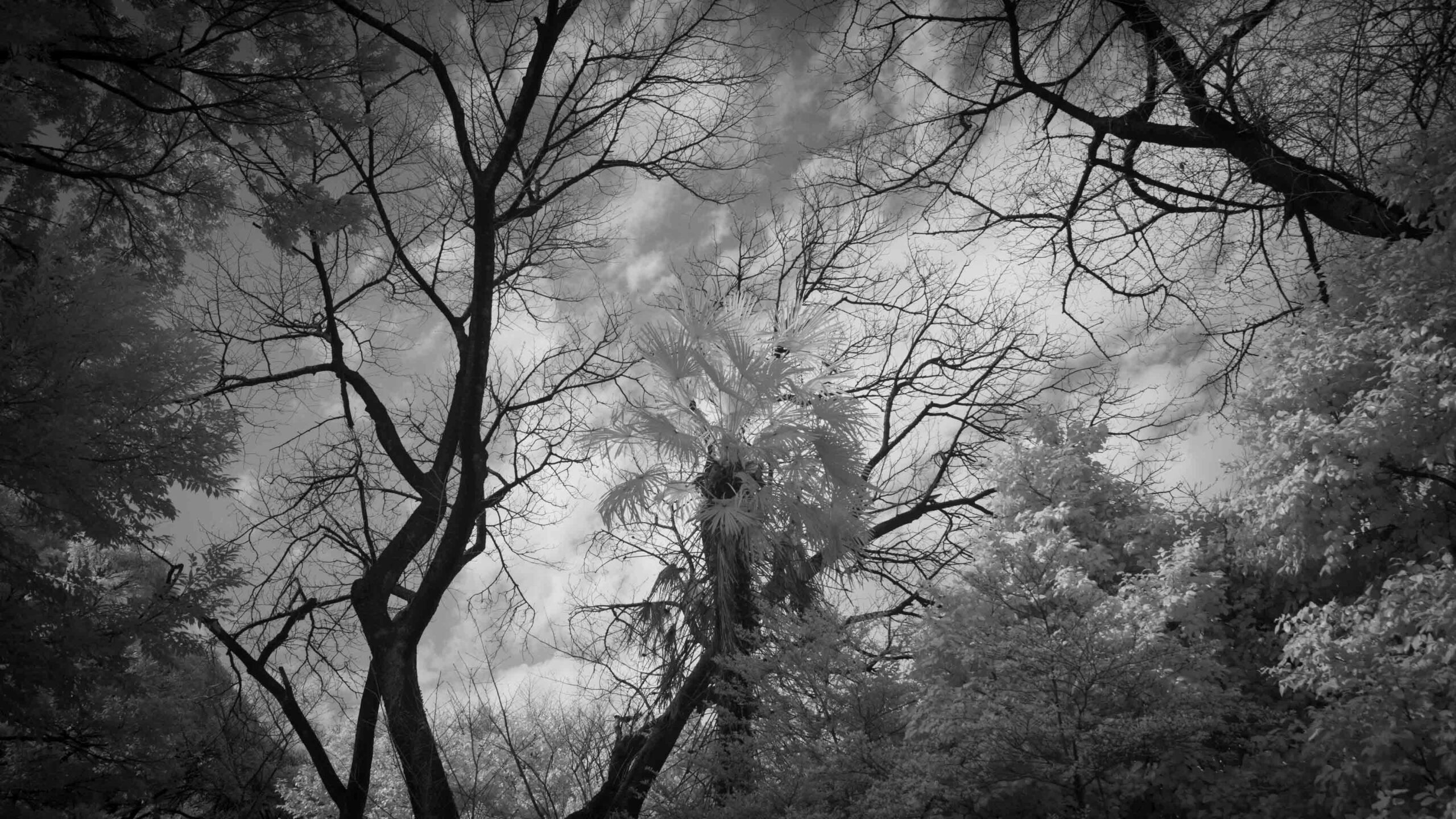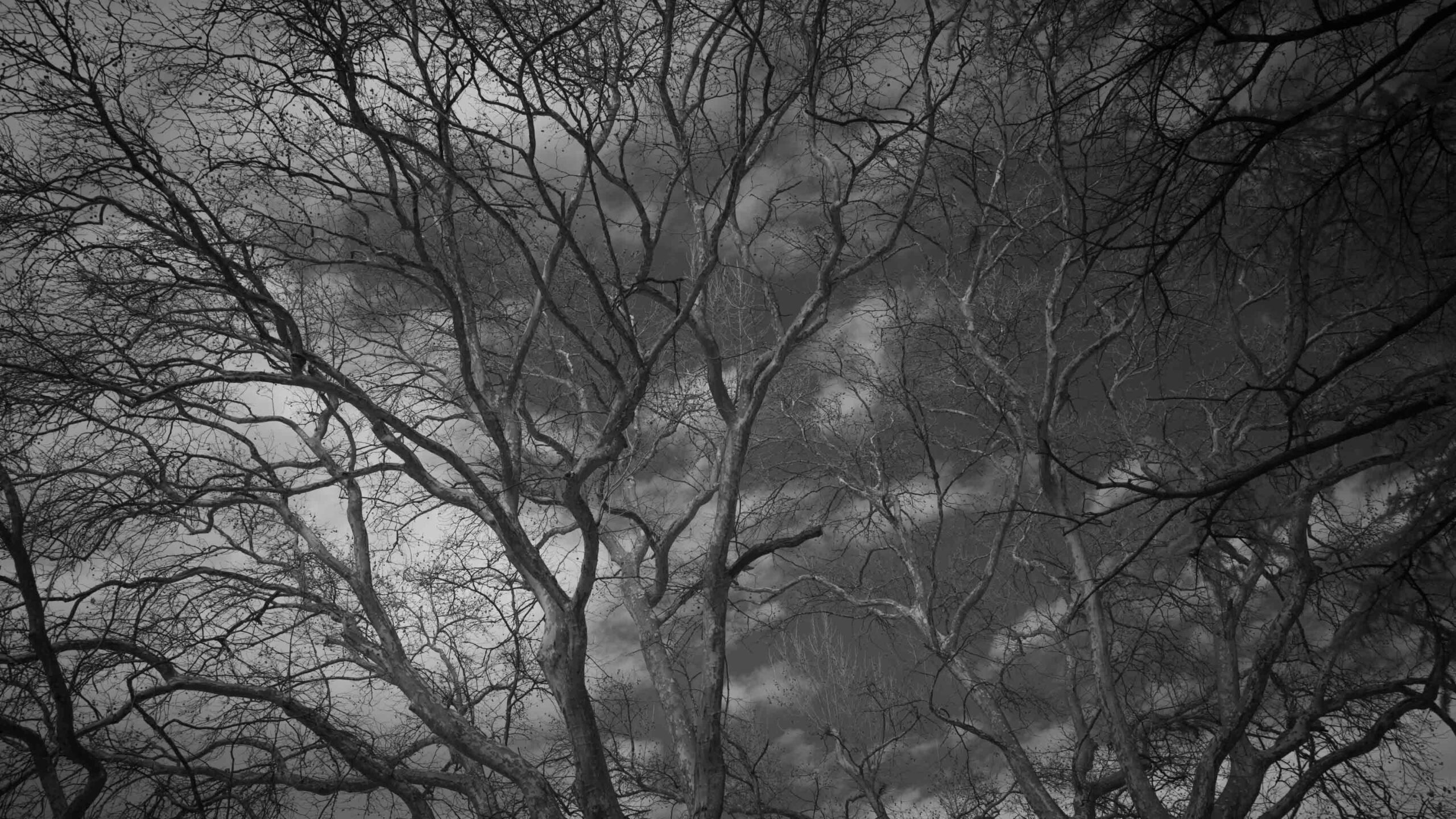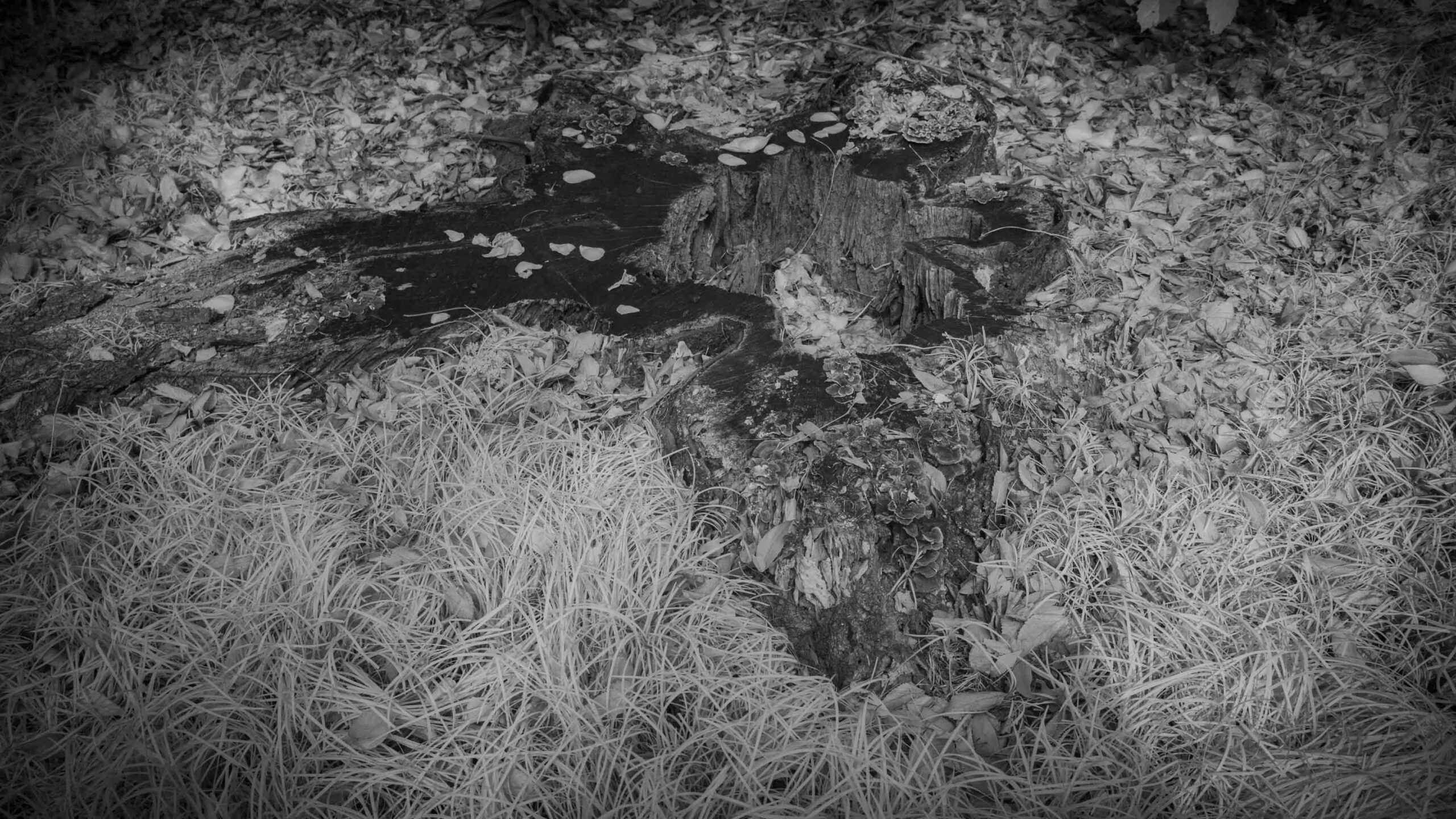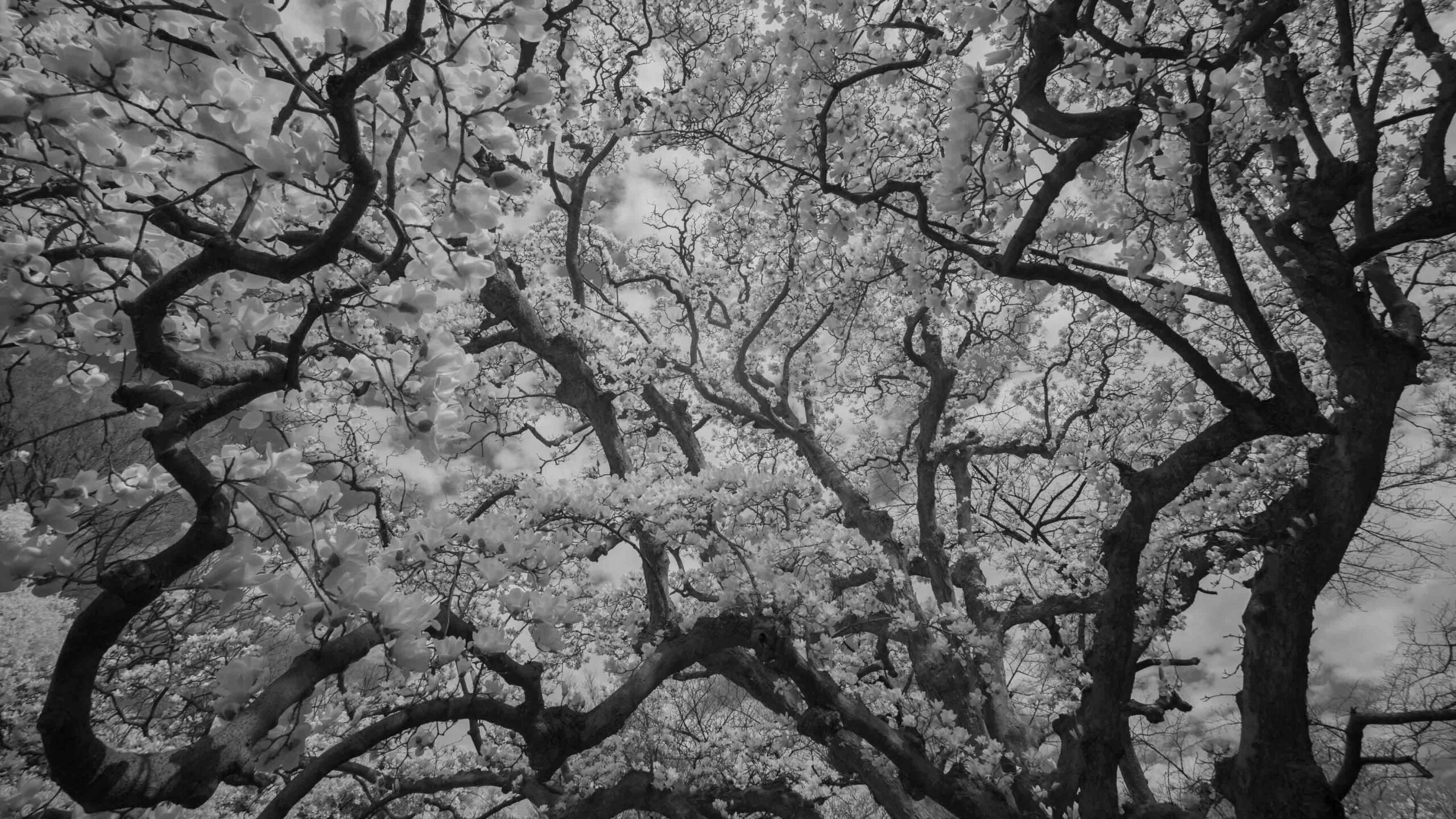新宿御苑 in infrared
/ Tokyo
可視光線、という言葉があるがそれは人間が見える波長の光(波)であって、もっと波長の長い波「赤外線」から短い波「紫外線」そしてX線、ガンマ線まで振動数(周波数)は広域に渡っている。 人間以外の動物によってはより広い周波数の光を見ることができ、蝶の目は紫外線をとらえることができる。 赤外線はより「熱」を伝える要素が強くなり、体温を持つ我々人間は常に赤外線を発している。植物も太陽光を受けることにより、特に葉は太陽光の下で強い赤外線をだす。 カメラには「人間の目」を持たせる必要があり、そのためセンサーの前には赤外線をカットするフィルターが装着されているが、そのフィルターを外せば赤外線も感知することが可能となる。 所有するデジタルカメラの一台の赤外線カットフィルターを外し、一方で可視光線をカットするフィルターをレンズに装置することにより木々の発する赤外線を捉えて作品にしてみた
The term "visible light" refers to the wavelengths of light (waves) visible to humans, but there is a wide range of frequencies from infrared rays, which have longer wavelengths, to ultraviolet rays, which have shorter wavelengths, to X-rays and gamma rays. Some animals other than humans can see a wider range of light frequencies, and the butterfly eye can detect ultraviolet rays. Infrared rays have a stronger "heat" transmitting element, and we humans, who have body heat, emit infrared rays all the time. Plants also emit strong infrared rays when exposed to sunlight, especially leaves. Cameras need to have "human eyes" and therefore have a filter in front of the sensor to cut off infrared radiation, but if the filter is removed, infrared radiation can also be detected. By removing the infrared-cut filter from one of my digital cameras and attaching a filter that cuts visible light to the lens, I was able to capture the infrared light emitted by trees and create this work of art.











